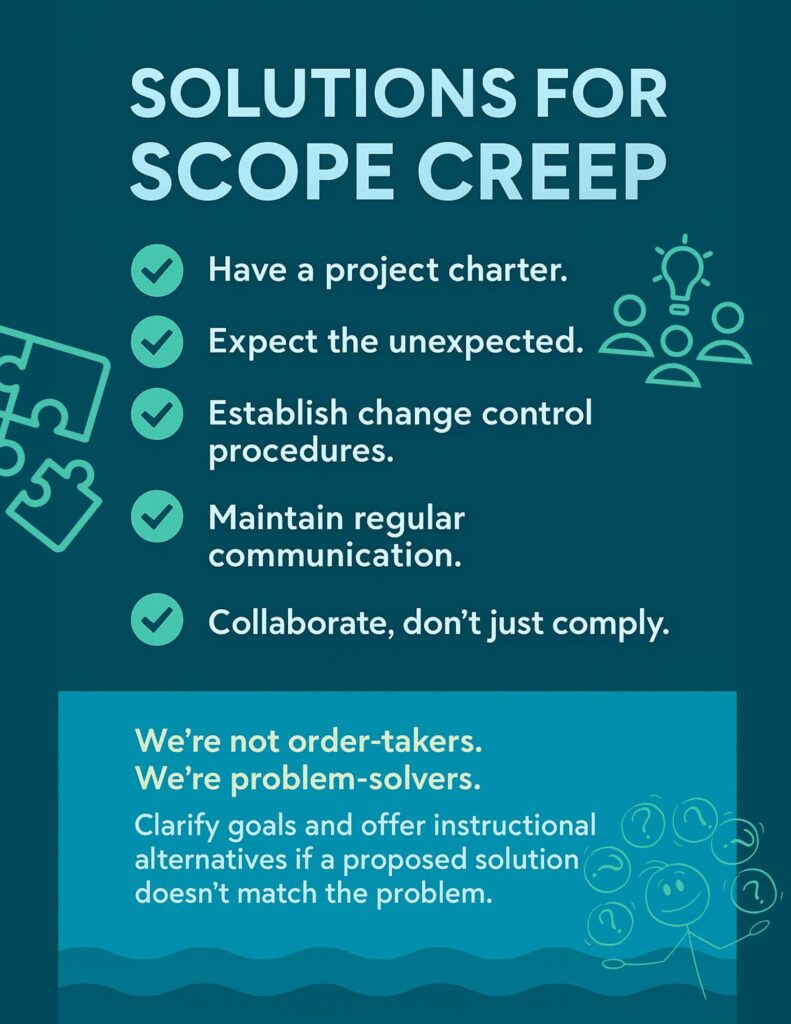Lessons from Sales and How They Apply to Instructional Design
Ahhh… scope creep—the bane of every project manager, sales rep, and instructional designer alike. It’s the result of overpromising and underdelivering, or the opposite: not defining expectations clearly enough, which leads to overdelivering just to maintain trust and credibility. In either case, it’s a symptom of misalignment—and a costly one at that.
Before I started working at the sailing club and entered the world of instructional design, I spent years selling windows, siding, and roofing across the Portland metro area. The stakes were high. If the scope of work wasn’t crystal clear, any misunderstanding came directly out of my paycheck—and sometimes even docked future commissions if the situation went south.
One vivid memory? A customer assumed we’d paint their window trim after installation. It wasn’t in the contract, but the expectation was there. In those moments, you either talk the customer into a change order (send an updated DocuSign) or you eat the cost to save face, avoid bad reviews, and maintain company integrity. Neither option is ideal—especially when you’re away on vacation getting bombarded by calls from contractors, the project manager, the company owner, and the unhappy customer. Stressful doesn’t even begin to cover it.
In sales, we live by the rule: underpromise and overdeliver. The same should apply to instructional design.
Scope Creep in Instructional Design
Today, I build training resources, manage curriculum, and develop digital learning tools. And guess what? Scope creep hasn’t gone away—it just wears a different hat.
Take this scenario: A manager says, “I need a safety training video for the new machine by next week.” You nod and say, “Sounds good!” without asking key follow-up questions.
But…
- Can the machine be shut down for filming?
- Is your editing software compatible with the LMS?
- Will 4K video files even upload successfully?
- Is video the right modality for the issue at hand?
Without that context, you might find yourself on a tight deadline with an impossible task—and no extra budget or time to adjust.
Solutions for Scope Creep
So what’s the answer?
It starts with clarity.
✅ Have a project charter.
Define what’s in scope—and what isn’t. List deliverables, tech specs, stakeholders, approval processes, and deadlines. Get it signed off.
✅ Expect the unexpected.
Identify potential risks or roadblocks up front. Discuss “what if” scenarios before they happen.
✅ Establish change control procedures.
Stakeholders need to know how to request changes, what that means for timelines, and how those changes will be documented.
✅ Maintain regular communication.
Weekly check-ins (even brief ones) go a long way in keeping everyone aligned and informed.
✅ Collaborate, don’t just comply.
We’re not order-takers. We’re problem-solvers. Clarify goals and offer instructional alternatives if a proposed solution doesn’t match the problem.
Final Thoughts
Whether you’re selling siding or developing a training module, scope creep is real—and relentless. But with the right communication, planning, and collaboration, it doesn’t have to derail your project.
In the end, the best outcome is one where everyone walks away aligned, satisfied, and ready for the next great build—be it a house, a sailboat, or a training course.


Leave a Reply
You must be logged in to post a comment.